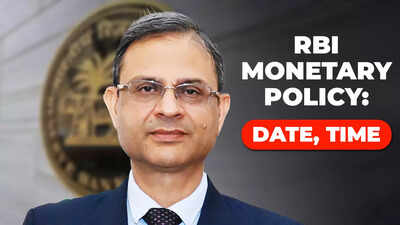Anticipation Grows as RBI Set to Announce Repo Rate Decision Amid Economic Uncertainty











2025-04-08T05:35:04.000Z

As the financial world watches closely, economists and market analysts are widely predicting that the Reserve Bank of India (RBI) will implement a reduction in the repo rate by 25 basis points during its upcoming Monetary Policy Committee (MPC) meeting.
The crucial RBI MPC meeting commenced on April 7, 2025, and is expected to culminate in significant announcements. RBI Governor Sanjay Malhotra is set to reveal the outcomes of the two-day deliberations on April 9, 2025, at 10:00 AM. Market participants are eager to pore over the governor's statements for insights regarding the central bank's stance on various economic factors, including projections for GDP growth and anticipated Consumer Price Index (CPI) inflation figures.
This MPC meeting holds particular weight as it unfolds amidst rising global market apprehensions regarding a potential recession in the United States, a slowdown in the world economy, and the adverse impacts stemming from the trade policies of the previous Trump administration, notably reciprocal tariffs.
The RBI's Monetary Policy Committee, chaired by Governor Malhotra, is tasked with evaluating the repo rate, liquidity conditions within the economy, CPI inflation rates, and the overall GDP growth outlook for India. Analysts maintain that a 25 basis points reduction in interest rates is probable given the recent easing of inflation and the pressing need to invigorate economic growth. The economic environment has been notably affected by trade barriers imposed by the United States, which has enacted a hefty 26 percent duty on imports from India. This policy is forecasted to have a significant impact on India's GDP growth for the fiscal year 2025-26, with estimations suggesting a decrease of 20-40 basis points, which could lower the expected growth rate from 6.7 percent to approximately 6.1 percent.
As the market braces for the MPC's announcement on Wednesday, it is important to note that the committee comprises six members, including Governor Malhotra, two senior RBI officials, and three government appointees. The outcome of their discussions will be transmitted live on April 9, 2025, starting at 10:00 AM via the RBI's official YouTube channel. This direct livestream will allow economic enthusiasts and the general public to engage with the governor's media address in real time.
Additionally, media outlets like the Times of India are gearing up to provide extensive coverage, analysis, and commentary on the implications of the MPC meeting on the broader economy and its potential effects on loan borrowers through their dedicated live blog.
Economists and market analysts are anticipating a cut in the repo rate from the current 6.25 percent down to 6 percent. This would follow a previous reduction of 25 basis points made in February 2025, marking the first reduction since May 2020 and the first change to the repo rate after a lengthy thirty-month span of stability.
A recent report from the State Bank of India (SBI) suggests that global economic growth is poised to face significant challenges due to a combination of trade barriers, unstable currency movements, and disruptions in capital flows, all of which could affect economies worldwide. The SBI research indicates that, while central banks are likely to maintain an accommodative stance, their strategies concerning interest rate decisions may remain ambiguous moving forward.
Looking ahead, the State Bank of India's Economic Research Department expressed optimism: 'We expect a 25-basis point rate cut in the April 2025 policy review. The cumulative rate cut over the cycle could reach at least 100 basis points, with two successive rate cuts being anticipated in February and April 2025. Following an interim pause in June 2025, the second wave of rate reductions could commence in August 2025.'
As the nation turns its eyes to the RBI, the implications of these decisions will reverberate through the economy, affecting everything from borrowing costs to consumer spending.
 Thomas Fischer
Thomas Fischer
Source of the news: timesofindia.indiatimes.com